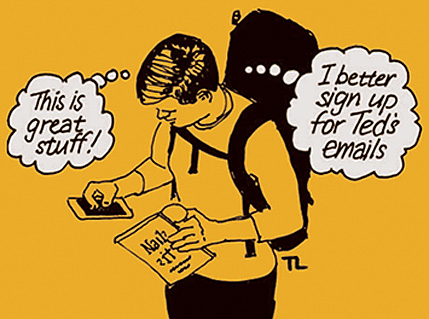Negotiations: AI and future work

Many of the older men were missing one or more fingers.
That was one of the first things I noticed at the farm.
I asked and the word was, “People get relaxed around the machines over time, forgetting how dangerous they are and…”
I was sixteen. It must have been the first time I realized that boring repetitive work could actually be dangerous. I did know that I struggled doing stuff that I found uninteresting. And I soared with art and design. I didn’t work on the farm long enough to get bored.
If I had stayed, what was new and exciting would become drudgery over time. The men with missing fingers became a reminder of why I needed to move on.
Even then, I knew I needed work that kept me engaged by offering new things to explore. I needed work that kept me in the creative flow.
AI and automation offer us the opportunity to reduce the amount of routine and repetitive work we do.
Humans are remarkable for our creativity, empathy, and problem-solving skills — but we struggle with repetitive tasks. Hence the loss of fingers. Monotonous work dulls our focus, invites errors, and drains our energy.
We crave variety, meaning and being in the flow, fully engaged it work that interests us..
It seems to me that the birth of mass manufacturing — and the systematic efficiency measures that followed, such as time and motion studies — forced large numbers into repetitive, mind-numbing jobs, many of them dangerous.
Before the Industrial Revolution and even back to our hunter-gatherer days, our success as a species depended on our ability to be adaptable, learn quickly, and handle diverse tasks. Mass manufacturing prioritized efficiency and standardization, leading to work that stifled our drive for creativity and flexibility.
AI, computers, and automated machines don’t tire, get bored, or lose focus or fingers, making them ideal for handling rule-based, repetitive tasks, freeing us to focus on what we do best –– iterating, trying new stuff, and solving complex problems. Best of all, using our emotional intelligence to create richer, more meaningful work experiences.
That’s all good, but there’s a much-talked-about dark side.
The looming job losses due to these new technologies are scary. Some of these losses are already very visible. Waymo One autonomous taxis in San Francisco have eliminated driving jobs. Truck driving jobs are speculated to be next. Employment numbers in journalism are a fraction of what they were only twenty years ago. Grocery cashiers are mostly gone. More out-of-sight but often mentioned factory and code-writing jobs are drying up. The legal profession is shrinking, finding that AI can replace what young lawyers just out of school used to do.
That’s scary.
It’s great that in this rapidly evolving futurist world, drudgery is supposed to be gone. But how will we eat?
Will we help people learn new creative and critical thinking skills so they can manage the AI systems through training? That seems like a good idea, but it doesn’t look like our education system is getting much popular support at the moment.
Andrew Yang ran on universal basic income, which at least got people thinking about the issues. Will we adopt UBI or other social safety nets that could buffer the effects of job loss? That doesn’t look possible at the moment, either. But it should be.
Historically, technological revolutions have destroyed jobs but created entirely new roles. AI and automation may lead to opportunities that are currently unimaginable.
AI is taking on repetitive tasks, boosting efficiency, and job losses are part of the result. But our human contribution has always been more significant than our ability to plan and do repetitive labor. Roles, where our judgment, empathy, and creativity are allowed to soar, have always created great work environments. Places that leverage our unique feeling-driven qualities improve the resulting products and services and make both clients and workers happy. I see that in my daily work with creatives.
We’re on the brink of a new era. The transition from repetitive drudgery to dynamic, creative engagement is not just a possibility—it’s here. The scars of our past, symbolized by the missing fingers, are a stark reminder of the cost of mind-numbing work. We now have technologies that promise to liberate our time and energy, but they come with their own challenges.
The future isn’t about giving up our jobs to systems that replace nuance and empathy.
The future must be about aggressively reimagining our roles in a society where our innate creativity, compassion, and problem-solving prowess define our value. It demands focused adaptation — reforming education, safeguarding career transitions, and embracing new social contracts.
We need a deliberate effort to develop workplaces where continuous learning and innovative thinking are not sidelined but celebrated.
We must prevent a future where technological progress perpetuates inequality.
We must create workplaces where everyone can flourish.
We must guide this evolution with wisdom and empathy so that it delivers not just efficiency but a richer, more humane experience.
With job losses looming, we must harness the tools that disrupt traditional work, using them to forge a path toward more meaningful and engaging opportunities.
The promise is a future where fewer lose their fingers and more reclaim their passion for their craft using these technologies is what I’m betting on.

